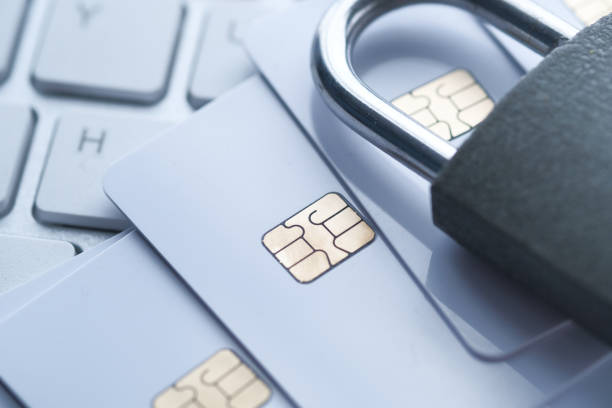In an increasingly interconnected world, the need for efficient and secure identification systems is more pressing than ever. Global digital identity systems are emerging as transformative tools that promise to reshape various sectors, including insurance, loans, and mortgages. By offering a unified and secure way to verify and manage identities, these systems are streamlining processes, reducing fraud, and enhancing customer experiences. Let’s dive into how global digital identity systems are making waves in these critical financial areas.
Table of Contents
ToggleWhat Are Global Digital Identity Systems?
Global digital identity systems are comprehensive frameworks that use digital means to verify and manage individuals’ identities across different countries and platforms. These systems leverage advanced technologies like blockchain, biometrics, and AI to create secure and portable digital identities.
1. Unified Identity Verification
Digital identity systems provide a standardized method for verifying identities, making it easier for institutions to authenticate users quickly and accurately. For example, a global digital identity could combine biometric data, government-issued ID numbers, and digital signatures into a single, secure profile.
2. Portability and Interoperability
One of the key benefits of global digital identity systems is their portability. Users can carry a single digital identity across various platforms and borders, facilitating smoother interactions with financial institutions regardless of location.
Transforming Insurance with Digital Identity Systems
The insurance industry stands to gain significantly from the adoption of global digital identity systems. By enhancing verification processes and reducing fraud, these systems are improving both efficiency and security.
1. Enhanced Fraud Prevention
Digital identity systems help mitigate the risk of identity fraud, a persistent issue in the insurance industry. By providing a secure and verifiable way to confirm an individual’s identity, these systems reduce the likelihood of fraudulent claims and misrepresentation.
For instance, if a policyholder submits a claim, the insurer can quickly verify their identity and assess the claim’s legitimacy using the global digital identity system. This reduces the potential for fraudulent activities and ensures that claims are processed fairly.
2. Streamlined Underwriting Processes
Underwriting in insurance involves assessing the risk associated with a policyholder. Global digital identity systems can streamline this process by providing comprehensive and accurate data about an individual’s history and risk profile.
By integrating various data sources into a single digital identity, insurers can more accurately evaluate risk and tailor insurance products to meet individual needs. This leads to more precise underwriting and better-fitting insurance solutions.
Revolutionizing Loan Applications with Digital Identity Systems
In the lending sector, global digital identity systems are transforming how loan applications are processed, making them more efficient and secure.
1. Accelerated Application Processes
Traditional loan applications often involve extensive paperwork and verification steps. Digital identity systems simplify this by providing a single source of truth for identity verification, allowing lenders to process applications more quickly.
For example, a digital identity system can instantly verify an applicant’s identity, employment status, and credit history. This reduces the need for manual checks and speeds up the loan approval process, benefiting both lenders and borrowers.
2. Improved Risk Assessment
Global digital identity systems enable lenders to access comprehensive and accurate information about applicants. This helps in assessing creditworthiness more effectively and making informed lending decisions.
With access to a complete digital profile, lenders can better evaluate an applicant’s financial history and risk factors, leading to more accurate credit scoring and personalized loan offers.
Transforming Mortgage Applications with Digital Identity Systems
The mortgage industry is also experiencing significant changes due to global digital identity systems. These systems are simplifying the mortgage application process and enhancing security.
1. Efficient Verification and Documentation
Mortgage applications often require extensive documentation and verification. Digital identity systems streamline this process by providing secure and easily accessible records of identity and financial information.
For instance, a digital identity can include verified records of income, assets, and credit history. This allows mortgage lenders to quickly access and review necessary information, reducing the time and effort required for documentation and verification.
2. Enhanced Security and Fraud Prevention
The mortgage process involves significant financial transactions and sensitive information. Digital identity systems offer enhanced security by ensuring that all parties involved are accurately verified and authenticated.
With a global digital identity, lenders can be confident that the information provided by applicants is genuine and up-to-date. This reduces the risk of fraud and ensures that mortgage transactions are secure and reliable.
Benefits and Challenges of Global Digital Identity Systems
1. Benefits
- Efficiency: Digital identity systems streamline verification processes, reducing paperwork and processing times for insurance, loans, and mortgages.
- Security: Enhanced security measures reduce the risk of identity fraud and ensure that sensitive information is protected.
- Portability: A unified digital identity allows users to interact seamlessly with financial institutions across borders and platforms.
2. Challenges
- Privacy Concerns: The collection and management of personal data raise privacy issues. Ensuring that digital identity systems comply with data protection regulations is crucial.
- Integration Issues: Implementing global digital identity systems requires integration with existing financial systems and processes, which can be complex and costly.
- Digital Divide: Not everyone has access to the technology required to use digital identity systems, potentially excluding certain populations from benefiting.
Conclusion: Embracing the Future of Financial Services with Digital Identity Systems
Global digital identity systems are poised to revolutionize the insurance, loan, and mortgage industries by enhancing efficiency, security, and customer experience. By providing a unified and secure method for verifying identities, these systems address longstanding challenges and create new opportunities for both financial institutions and consumers.
While there are challenges to address, such as privacy concerns and integration complexities, the potential benefits of digital identity systems are substantial. As technology continues to advance, embracing these innovations will be key to staying ahead in the rapidly evolving financial landscape. The future of financial services is increasingly digital, and global digital identity systems are at the forefront of this transformation, offering a glimpse into a more streamlined and secure financial future.

